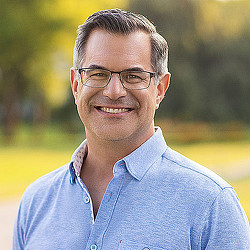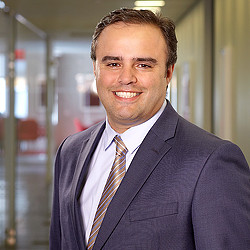The HBCU Student Design Charrette: A Study in Inclusivity and Hope
May 17, 2021 | By Jordan Goldstein, Joseph Lauro
Our global society is now living through a moment of reckoning on issues of race, equity, and justice. If you believe, as we do, that design, as a practice, should serve a greater purpose — that is, beyond purely aesthetic concerns — and aim to meet the deepest needs of society, then our industry is obligated to respond to this moment by offering healing, inclusion, and equal opportunity for all.
At Gensler, diversity and inclusion has always been an important part of our culture. But the events of the last year have served as a powerful catalyst for a more intentional and impactful focus on these areas. That is why we have taken steps to transform our industry, starting from within our own walls; we have begun to consider ways to foster meaningful change, including reviewing our hiring practices, pushing for products owned or made by minority-based businesses, and reimagining partnership with consultants, vendors, and suppliers.
We have also reached out to academia to aid in helping students understand that design is a viable profession for everyone. Given that just 2% of the architecture industry identify as Black or African American, there is a tremendous opportunity to create an environment in which all people, regardless of background, have a variety of pathways to success within our field.
A Bridge to a Better TomorrowThe result of that outreach to academia is our Historically Black Colleges and Universities (HBCU) Student Design Charrette. This first-of-its-kind program enables us to collaborate with all seven of the accredited HBCU architecture programs — Florida A&M University, Hampton University, Howard University, Morgan State University, Prairie View A&M University, Tuskegee University, and the University of the District of Columbia. In all, 54 volunteers from Gensler participated as mentors in the program, which we just completed as part of the spring 2021 semester at all seven schools.
The core curriculum of the program was rooted in Gensler’s mission: leveraging the power of design to create a better world. With an emphasis on design excellence, innovation, problem solving, and social impact, the program had three goals: give students the chance to exercise their creativity in a unique way; address some of the most pressing issues affecting our ever-changing world, with a particular focus on diversity and inclusivity; and build a stronger connection to academia that shows students the opportunities they have for global impact by pursuing a career in architecture and design.
The theme of the HBCU Student Design Charrette is bridges — that is, design solutions that bridge cultures, conflicts, and challenges faced in our current climate of uncertainty and glaring social inequality. From our vantage point, bridges are a powerful conceptual device because they are designed to cross divides. They can be metaphorical or literal, physical or virtual. They can be a place, a space, a movement, or a connection. The Edmund Pettus Bridge, in Selma, Ala., stands as a physical structure that became an iconic symbol, and the Black Lives Matter movement is a virtual bridge that has brought people together around a common platform.
These bridges, and others, offer paths for empathy, equity, and social change. Yet they will never erase the damage done to communities of color by years of racially-driven policies and practices. They are a beginning to a long-overdue conversation, and they strive to be actionable and impactful by healing the torn fabric of our cities and communities.
Seeking Design Solutions for Unmet NeedsFor the HBCU Student Design Charrette, we asked each participating team to focus on an urban environment and select a site where inequality has manifested in a spatial form and where a metaphorical bridge could help close the divide. The teams then examined the site’s unique challenges, nearby assets, and context within the local urban and social fabric. Based on this analysis, the teams then identified problems to address and defined opportunity areas for design explorations.
For this effort, we encouraged participants to go beyond obvious solutions and develop innovations that focused on unmet needs. To that end, it was key that the teams thought not only about how design interventions impact the built environment but also about how they impact behaviors. Ultimately, this effort was centered on exploring ways to enable greater inclusivity, provide more opportunities, and celebrate diversity within an urban context.
As a result of the program, we have awarded summer fellowships to 15 of the students from these programs. In addition, students from each school are now presenting their work to our entire firm during a series of global webinars. And over the coming weeks, we will chronicle the entire HBCU Student Design Charrette here, on our Dialogue blog.
Manifesting OptimismUltimately, the HBCU Student Design Charrette harnesses the power of design thinking to solve challenges where misguided polices have failed, where communities have been left behind, and where the denial of equality and opportunity have been allowed to persist.
Given the framework of the program, we hope that students have gained a better understanding of how the built environment functions as a physical expressions of our values and how we, as designers, can manifest cities and spaces of optimism and equity. And though no single action will solve society’s problem around issues of race and inequality, we believe that efforts such as the HBCU Student Design Charrette will support social justice efforts, generate greater opportunities for people of color, and help our firm and our industry take meaningful steps toward progress in design and in the world at large.
For media inquiries, email .


